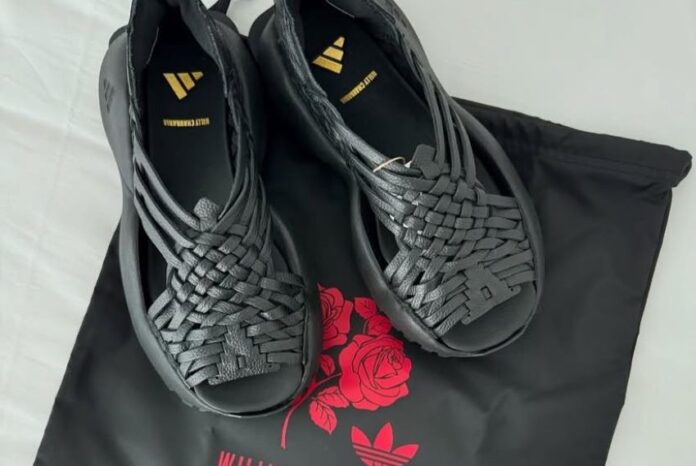Oaxaca’s state government has announced plans to file a legal complaint against Adidas and Mexican-American designer Willy Chavarría, citing the alleged unauthorized use of the name “Oaxaca” and of traditional huarache designs in the company’s newly launched Oaxaca Slip-On sandal.
Governor Salomón Jara Cruz’s legal threat on Tuesday was the latest charge of cultural appropriation emanating from Oaxaca. Earlier this year, a group of 300 Oaxacan artisans accused two U.S. fashion brands of using traditional huipil patterns in their clothes.

In the current complaint, the governor emphasized concerns that the creators did not obtain consent from the community of Villa Hidalgo Yalalág, whose signature huarache craftsmanship inspired the sandal. He also expressed his disdain over the use of the name “Oaxaca” for the new shoe.
“We will approach our brothers and sisters in Yalalág to file a report for identity theft,” Jara Cruz stated at a press conference.
The Oaxaca Slip-On was officially unveiled this week during a massive Adidas event at the Puerto Rico Museum of Art in San Juan. Adidas has taken over the historic facility’s exhibit halls and gardens for three weeks to celebrate five years of creative partnership between Adidas Originals and renowned Puerto Rican reggaeton star Bad Bunny.
Chavarría and other creative forces from Adidas kicked off the event by participating in panels that also unveiled new models — including the Oaxaca Slip-On.
The shoe features a premium leather upper in a hand-woven style reminiscent of traditional Oaxacan huaraches, paired with a chunky Adidas sneaker sole.
An acclaimed U.S. designer known for fusing streetwear, political activism and Chicano cultural references, Chavarría said the shoe seeks to merge Indigenous Mexican footwear heritage with Chicano style and contemporary streetwear.
“I celebrate Latino culture and celebrate queer culture because that’s like me,” Chavarría told Sneaker News at the event. “But at the end of the day … it’s about human dignity. It’s about respecting and loving one another.”
Chavarría was born in 1967 in Huron, a small farmworker community in Fresno County, California.
“It makes me very proud to be working with a company that really respects and uplifts culture in the most real way,” he added.
Nonetheless, Oaxacan artisans and officials have raised concerns about recurring incidents of cultural appropriation, where international brands, including luxury designers, have been accused of taking Indigenous Mexican designs without permission or benefit to the communities.
Levi’s accused of culturally appropriating indigenous designs
Previous cases have involved fashion companies such as Carolina Herrera, Zimmermann and Shein. The Mexican fabric company Modatelas was accused of plagiarizing traditional designs from the Isthmus of Tehuantepec, and the U.S. brand Anthropologie was accused of using the Xaam nïxuy design from a Mixe community without permission.
In 2022, the Ralph Lauren brand apologized after being accused of plagiarizing Mexican textile designs.
The Ministry of Culture has long argued these practices represent both economic harm and “symbolic dispossession” of Indigenous identity and creativity.
Villa Hidalgo Yalalág is a Zapotec community in the Sierra Norte region of Oaxaca, roughly 90 kilometers northeast of Oaxaca City. The community is recognized for its hand-woven huaraches, textiles and other traditional crafts that are emblematic of Oaxacan heritage.
With reports from El Financiero, Publimetro and Sneaker News
